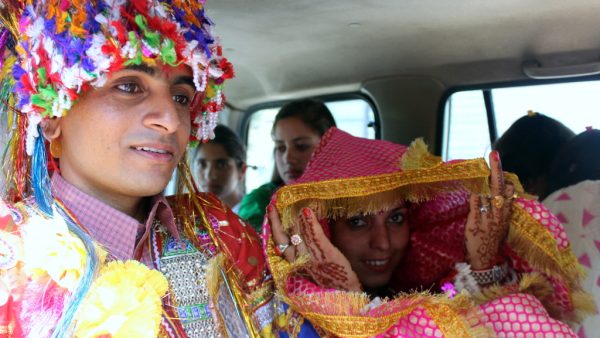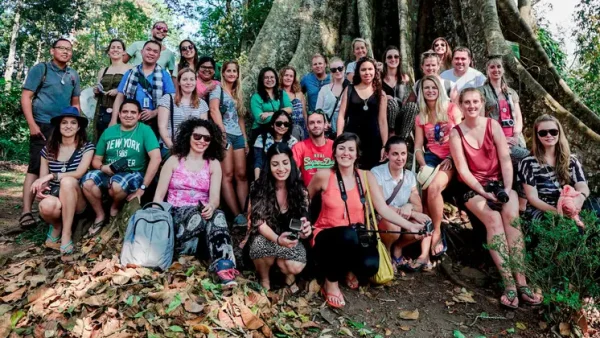Christmas Eve, 1497, a European sailor, far away from his home in Lisbon, sat in a ship anchored at the coast of Natal after rounding the Cape of Good Hope, gazing at the endless stretch of water before him, and dreaming. Dreaming about the one place that was a part of myths and legends back from where he came. He had set upon this voyage 6 months ago, on July 8th, with four vessels. While he himself rode in the 200-ton St. Gabriel, his younger brother Paulo led the St. Rafael, and together they sailed with the very interesting and unusual company of thugs and criminals of Portugal.
1. Know your spices – a walk through the spice gardens of Kerala.
You see, the journey this particular expedition was so infamous for having failed repeatedly throughout history, that the then King Manuel of Portugal deemed it fit only to risk lesser important lives for the journey. So on that fated Christsmas Eve as this sailor sat in his ship contemplating the possibilities of success and failure of reaching this destination, little did he know that in another 5 months he will not only fulfill his dream of finding this fabled land of the East, but also go down in history to be the man who changed the face of European trade, navigation and colonialism for many many years to come?
2. Spice paparazzi!
You already know the end of this unnecessary history lesson. More than 500 years ago, on 17th May 1498, Portuguese explorer Vasco da Gama became the first European to reach India via the Atlantic Ocean. When he returned to Portugal with spices and silk, it is rumored that he earned four times the money he spent on his entire voyage just by selling the spices.
And where was this enchanted land of spices, you ask? On the shores of Kappad Beach in Kozhikode, fondly called the “Jewel of the Malabar,” in present-day Kerala, India.
Kerala, a small state on the map of a vast country, with a terrain so beautifully vast and varied, that it makes you marvel at the cultural and geographic diversity you encounter at every step. From the gently rolling hillsides to the palm-laden beach-fronts, from calm and serene backwaters to the dense and enchanting forest covers – Kerala offers its tourists several worlds packed in one destination. God’s Own Country, they call it. And it all began with the quest of one Portuguese explorer determined to discover the fabled spice gardens of the East!
3. Spice Tourism
Spice tourism is one of the major attractions for Indian as well as international tourists finding their way to Kerala. We visited one of the many hill stations in the state – Thekkady, known as the spice belt of India. Situated on the Munnar-Thekkady road, the drive to reach the spice garden was nothing close to how beautiful the spice trail experience turned out to be, and trust me, the drive was one of the most scenic one’s I have experienced. One little walk under the pleasant coastal sunshine and we saw plantations of a very wide range of spices like Pepper, Cloves, Cinnamon, Nutmeg, Cardamom, Vanilla, Ginger and Turmeric, along with many indigenous Ayurvedic herbs and beautiful lush-green coffee and tea plantations too.

Our tour-guide, a young and cheerful Malayali man, welcomed us to the spice gardens with warm greetings in every language. We were an enthusiastic group of 30 travel bloggers from over 20 countries, and I absolutely admired how comfortably he interacted with everyone.
Spice Tour at Thekkady, Kerala
We began with the King of Spices – Pepper, a flowering vine cultivated for the tiny fruits that are plucked and dried in different stages to be used as spices and seasoning. We were visiting in March, when the vine was filled with green pepper pods, which were ready to be plucked and sun-dried to procure the used Indian spice – black pepper.
The same green pods if left unplucked, would eventually mature into red pepper, which can then be sun-dried to make white pepper – a crucial ingredient for the famous South Indian fish curries. Malabar Black Pepper, also fondly crowned “Black Gold” by traders, constitutes 75% of international trade of Kerala, and is historically famous for starting trade in India.
On closer observation one will notice that these pepper pods are born between one male and one female leaf on the vine, and the pollination of the plant is favored by the mild showers of Kerala.
We then moved to another very crucial, and breathtakingly beautiful, spice of India. The tree is cultivated for two spices derived from the same fruit: Nutmeg and Mace, and is also commercially important for essential oils and butter. While Mace is made from the crimson-colored aril wrapped around the Nutmeg seed, Nutmeg spice is obtained by sun-drying the Nutmeg seed itself for six to eight weeks. Bloggers had a field-day trying to get the best picture of this colorful fruit that changed looks with every un-layering!
Next up was the world’s third most expensive spice – the Cardamom. Coming from the family of orchards, this Queen of Spices is used in two forms – black and green cardamom. A shorter plant compared to the others we had seen until now, we were informed by or guide that Cardamom is so expensive because not only does a simple Cardamom plant take 3 years to grow, it also has a maximum life-expectancy of 7 years, and it needs a special cover from sun and rains to truly flourish.
This is why you will notice how the leaves of the plants grow in the form of an umbrella, thus protecting the flowers from the sun, and 3 meter tall plant is also grown in shade under another bigger plant. Cardamom picking and processing is also a painstakingly difficult process, as ladies sit patiently plucking one flower at a time, which are then dried using electric heat (not sunlight).
The spice is not only used for seasoning and cooking, but is also sought out for medicinal purposes like teeth and gum healing, lung congestion, and digestive disorders.
Cloves
Cloves were the easiest yet the most surprising spice to guess. To an untrained eye, what look like a beautiful cluster of crimson flower buds waiting to blossom, on closer observation reveal the presence of tiny little fragrant cloves wrapped inside. The buds have to be picked before they mature into flowers, and once processed, are used extensively for culinary as well as medicinal purposes.
Clove clusters
We went on to see many other spices like Cinnamon scraped off the bark of the tree, or turmeric procured from the roots. We also saw Cocoa and Coffee plants, and learned about the many types and processes that go into procuring the right quality harvest!
The entire trail, which took us approximately 3-4 hours to complete, was a whirlwind of exciting trivia and surprising facts about the simple things we use regularly in our everyday life. We were promised a “Trip of a Lifetime” when we went to Kerala, and it was experiences like this one that really added meaning to that phrase! Now more confident about what we have to look in our spices, we ended our walk by stuffing our shopping bags with all the spices available at Spice Shop located on-property.
And of course, before we leave, one glass of fresh coconut water please!
Details of the Spice Trail:
Location: Periyar Spice & Ayurvedic Garden, Munnar Thekkady Road, Thekkady
Email: periyarspicegarden@gmail.com
Best time to visit: Post monsoons
Duration: 3-4 hours
Closing Words
For more from my Kerala travels, I am sharing some of the older posts. This trip was a part of the Kerala Blog Express organized annually by Kerala Tourism.
Humble reminder: Travel responsibly. Keep your travel trails clean! Respect the local culture.



